Groups joined
Discussions started
Discussion Comments
Resources added
Stephanie O'Donnell added a new Event - "SLN Webinar: Tech for wildlife: The role AI and technology can play in nature conservation" to AI for Conservation
Stephanie O'Donnell added a new Career Opportunity - "Data Manager and Technology Coordinator, ABC Global Climate Center" to AI for Conservation
Stephanie O'Donnell added a new Event - "International Day of Forests: "New Technological Innovations are Needed to Halt Deforestation and Forest Degradation" Panel" to Geospatial
Stephanie O'Donnell added a new Article - "Watch Now: Scaling Innovation in Conservation, WILDLABS at World Wildlife Day 2024" to Emerging Tech
Stephanie O'Donnell added a new Funding Opportunity - "Salesforce Accelerator: AI for Climate" to AI for Conservation
Stephanie O'Donnell added a new Event - "13th International Conference on Climate Informatics" to AI for Conservation
Stephanie O'Donnell added a new Discussion - "Come for the trees and geese, stay for the AI: using computer vision for urban forestry and wildlife monitoring" to AI for Conservation
Stephanie O'Donnell added a new Discussion - "Shedding light on nocturnal behaviour: A cost-effective solution for remote, infrared video recording in the field" to Camera Traps
Stephanie O'Donnell added a new Discussion - "Introducing the Inventory: The rise of the conservation tech wiki!" to Emerging Tech
Stephanie O'Donnell added a new Discussion - "Open-Source design guide for a low-cost, long-running aquatic stereo camera" to Sensors
Stephanie O'Donnell added a new Discussion - "New Toolkit to Help Communities in Africa to Live Safely with Elephants" to Human-Wildlife Coexistence
Stephanie O'Donnell added a new External Link - "Benchmarking behavior classification of bio-logger data" to AI for Conservation
Stephanie O'Donnell added a new Discussion - "Early Warning Systems (HWC) - successes/failures, recommendations? " to Human-Wildlife Coexistence
Stephanie O'Donnell added a new Discussion - "Drone mapping at scale: capturing, processing, and distributing aerial imagery in Virunga National Park" to Drones
Stephanie O'Donnell added a new Discussion - "Watch now - The State of Conservation Technology: 3 Year Trends " to Emerging Tech
Stephanie O'Donnell added a new Funding Opportunity - "Kinship Conservation Fellows" to Early Career
Stephanie O'Donnell added a new Funding Opportunity - "Impact Shakers Accelerator" to Emerging Tech
Stephanie O'Donnell added a new Discussion - "Is anyone or platform supporting ML for camera trap video processing (id-ing jaguar)? " to AI for Conservation
Stephanie O'Donnell added a new Discussion - "Wishlist for kit in a field-based Research Station or tech testing space?" to Community Base
Stephanie O'Donnell added a new Event - "Catch up with The Variety Hour: November 2023" to Community Base
Stephanie O'Donnell added a new Article - "In case you missed it... (no.2)" to Acoustics
Stephanie O'Donnell added a new Article - "Introducing The Debrief: Season 1" to Climate Change
Groups
Group
- Latest Discussion
- How has the Funding & Finance group done?
- Latest Resource
- /
- AI for Conservation Office Hours: 2025 Review
Read about the advice provided by AI specialists in AI Conservation Office Hours 2025 earlier this year and reflect on how this helped projects so far.
Group
- Latest Discussion
- Apis Nomadica Labs: Mobile Bee-Search for the Future of Food & Medicine
- Latest Resource
- /
- Zimbabwe Shines: 5 Key Takeaways from Ramsar COP15
Making waves in wetland conservation: Explore the outcomes and insights from Ramsar COP15, a premier global event on wetland protection and sustainability
Group
- Latest Resource
- /
- AI for Conservation Office Hours: 2025 Review
Read about the advice provided by AI specialists in AI Conservation Office Hours 2025 earlier this year and reflect on how this helped projects so far.
Group
- Latest Discussion
- New Group Proposal: Systems Builders & PACIM Designers
- Latest Resource
- /
- Population genetics with eDNA
Using SNP markers with an Amphibian species, we were able to identify a total of 17,617 nuclear single nuclear polymorphisms shared across individual, pond eDNA (4 populations) and tank eDNA samples (where tadpoles of the four ponds were housed), enabling us to detect genetic structuring across sampling locations (previously demenstrated with microsatellites and tissue samples), consistent with individual-based estimates. Collecting only the matrix (here water) allows describing the existing population structure...that could be a nice progress for conservation biology...
Group
- Latest Discussion
- Apis Nomadica Labs: Mobile Bee-Search for the Future of Food & Medicine
- Latest Resource
- /
- Siguiendo Ballenas: rastreo satelital desde el espacio revela sus rutas migratorias // Tracking right whales from outer space reveals their migratory routes
Un ambicioso proyecto internacional está usando transmisores satelitales para monitorear los viajes migratorios de ballenas francas australes, permitiendo entender sus sorprendentes patrones de desplazamiento en tiempo real. // An ambitious international project is using satellite tags to monitor the migratory journeys of southern right whales, allowing researchers to understand their surprising movement patterns in real time.
Group
- Latest Discussion
- G-DiNC 2026: Global Drones in Nature Conservation Symposium & Expo
- Latest Resource
- /
- BoutScout – Beyond AI for Images, Detecting Avian Behaviour with Sensors
In this case, you’ll explore how the BoutScout project is improving avian behavioural research through deep learning—without relying on images or video. By combining dataloggers, open-source hardware, and a powerful BiLSTM deep learning model trained on temperature data, the team has reduced the time needed to analyse weeks or even months of incubation behaviour to just seconds. This has enabled the discovery of new patterns in how tropical birds incubate their eggs across different elevations and climates. With tools soon to be released on PyPI, including a no-code platform for behavioural analysis, this work offers a fresh, scalable approach for conservationists and researchers working on breeding data at the tropics.
Group
- Latest Discussion
- Piloting a QGIS Course for Conservation Staff – Seeking Interest & Input
Please help us by participating in a MSc research project on what you consider to be 'evidence' in your work in conservation.
Group
- Latest Discussion
- Beyond the Tech Hype / Más Allá del Hype Tecnológico
Please help us by participating in a MSc research project on what you consider to be 'evidence' in your work in conservation.
Group
- Latest Discussion
- Graph of life platform
This is a chance to participate in a short survey about the preferences that conservation practitioners have for evidence. There's a chance to win one of three £20 Mastercard gift cards.
Group
- Latest Resource
- /
- Nature Tech for Biodiversity Sector Map launched!
Conservation International is proud to announce the launch of the Nature Tech for Biodiversity Sector Map, developed in partnership with the Nature Tech Collective!
Group
- Latest Discussion
- Suggestions for research funds
- Latest Resource
- /
- AI for Conservation Office Hours: 2025 Review
Read about the advice provided by AI specialists in AI Conservation Office Hours 2025 earlier this year and reflect on how this helped projects so far.
Group
- Latest Discussion
- G-DiNC 2026: Global Drones in Nature Conservation Symposium & Expo
- Latest Resource
- /
- Siguiendo Ballenas: rastreo satelital desde el espacio revela sus rutas migratorias // Tracking right whales from outer space reveals their migratory routes
Un ambicioso proyecto internacional está usando transmisores satelitales para monitorear los viajes migratorios de ballenas francas australes, permitiendo entender sus sorprendentes patrones de desplazamiento en tiempo real. // An ambitious international project is using satellite tags to monitor the migratory journeys of southern right whales, allowing researchers to understand their surprising movement patterns in real time.
Group
- Latest Discussion
- Do dogs influence small mammal trapping success rates?
Scientists at Victoria's Healesville Sanctuary are using trained sniffer dogs on paddleboards to track and identify platypuses in their habitat.
Group
- Latest Discussion
- Free online tool to analyze wildlife images
- Latest Resource
- /
- AI for Conservation Office Hours: 2025 Review
Read about the advice provided by AI specialists in AI Conservation Office Hours 2025 earlier this year and reflect on how this helped projects so far.
Group
- Latest Discussion
- Free online tool to analyze wildlife images
- Latest Resource
- /
- IUCN Red list R client.
Everything you need on the IUCN Red list is now accessible from R, outputted as tibble to facilitate data query, analysis, and visualization.
Group
- Latest Discussion
- Online Ocean-Focused GIS Course
- Latest Resource
- /
- AI for Conservation Office Hours: 2025 Review
Read about the advice provided by AI specialists in AI Conservation Office Hours 2025 earlier this year and reflect on how this helped projects so far.
Group
- Latest Discussion
- AI accelerator for nonprofits working in the Climate area
- Latest Resource
- /
- Case Study: Drone-based radio-tracking of Eastern Bandicoots
Wildlife Drones was deployed by Zoos Victoria in a trial project tracking captive-bred Eastern Barred Bandicoots that were tagged and released into the wild
Group
- Latest Resource
- /
- BoutScout – Beyond AI for Images, Detecting Avian Behaviour with Sensors
In this case, you’ll explore how the BoutScout project is improving avian behavioural research through deep learning—without relying on images or video. By combining dataloggers, open-source hardware, and a powerful BiLSTM deep learning model trained on temperature data, the team has reduced the time needed to analyse weeks or even months of incubation behaviour to just seconds. This has enabled the discovery of new patterns in how tropical birds incubate their eggs across different elevations and climates. With tools soon to be released on PyPI, including a no-code platform for behavioural analysis, this work offers a fresh, scalable approach for conservationists and researchers working on breeding data at the tropics.
Group
- Latest Discussion
- Online Ocean-Focused GIS Course
This is a chance to participate in a short survey about the preferences that conservation practitioners have for evidence. There's a chance to win one of three £20 Mastercard gift cards.
Group
- Latest Resource
- /
- New WILDLABS Funding & Finance group
WildLabs will soon launch a 'Funding and Finance' group. What would be your wish list for such a group? Would you be interested in co-managing or otherwise helping out?
Group
- Latest Discussion
- DIY: Pressure Chamber
- Latest Resource
- /
- Can CBIs promote coexistence? A Case Study from Northern Tanzania
Can conservation-based incentives promote the willingness of local communities to coexist with wildlife? A case of Burunge Wildlife Management Area, Northern Tanzania
Group
- Latest Discussion
- GIS and AI on deforestation and Climate Change
- Latest Resource
- /
- Zimbabwe Shines: 5 Key Takeaways from Ramsar COP15
Making waves in wetland conservation: Explore the outcomes and insights from Ramsar COP15, a premier global event on wetland protection and sustainability
Group
- Latest Discussion
- Free online tool to analyze wildlife images
- Latest Resource
- /
- IUCN Red list R client.
Everything you need on the IUCN Red list is now accessible from R, outputted as tibble to facilitate data query, analysis, and visualization.
Group
- Latest Discussion
- New Group Proposal: Systems Builders & PACIM Designers
- Latest Resource
- /
- Application of computer vision for off-highway vehicle route detection: A case study in Mojave desert tortoise habitat
Driving off-highway vehicles (OHVs), which contributes to habitat degradation and fragmentation, is a common recreational activity in the United States and other parts of the world, particularly in desert environments with fragile ecosystems. Although habitat degradation and mortality from the expansion of OHV networks are thought to have major impacts on desert species, comprehensive maps of OHV route networks and their changes are poorly understood. To better understand how OHV route networks have evolved in the Mojave Desert ecoregion, we developed a computer vision approach to estimate OHV route location and density across the range of the Mojave desert tortoise (Gopherus agassizii). We defined OHV routes as non-paved, linear features, including designated routes and washes in the presence of non-paved routes. Using contemporary (n = 1499) and historical (n = 1148) aerial images, we trained and validated three convolutional neural network (CNN) models. We cross-examined each model on sets of independently curated data and selected the highest performing model to generate predictions across the tortoise's range. When evaluated against a ‘hybrid’ test set (n = 1807 images), the final hybrid model achieved an accuracy of 77%. We then applied our model to remotely sensed imagery from across the tortoise's range and generated spatial layers of OHV route density for the 1970s, 1980s, 2010s, and 2020s. We examined OHV route density within tortoise conservation areas (TCA) and recovery units (RU) within the range of the species. Results showed an increase in the OHV route density in both TCAs (8.45%) and RUs (7.85%) from 1980 to 2020. Ordinal logistic regression indicated a strong correlation (OR = 1.01, P < 0.001) between model outputs and ground-truthed OHV maps from the study region. Our computer vision approach and mapped results can inform conservation strategies and management aimed at mitigating the adverse impacts of OHV activity on sensitive ecosystems.
Group
- Latest Discussion
- Support the Cartographer Cause!
- Latest Resource
- /
- MyProgress: Advancing GIS and R programming skills.
A fascinating journey of unleashing my potentials in spatial analysis using ArcGIS Pro and R programming.
Group
- Latest Resource
- /
- Nature Tech for Biodiversity Sector Map launched!
Conservation International is proud to announce the launch of the Nature Tech for Biodiversity Sector Map, developed in partnership with the Nature Tech Collective!
Group
- Latest Discussion
- Free online tool to analyze wildlife images
- Latest Resource
- /
- AI for Conservation Office Hours: 2025 Review
Read about the advice provided by AI specialists in AI Conservation Office Hours 2025 earlier this year and reflect on how this helped projects so far.
Group
- Latest Discussion
- Mothbox Documentary [Wildlabs Award 2024)
- Latest Resource
- /
- A new underwater camera trap for freshwater wildlife monitoring
Proud of sharing our paper introducing our underwater camera trap, a solution for automating the production of underwater images and videos of amphibians, reptiles, invertebrates, mammals...
Group
- Latest Discussion
- Women Conserving Southern Africa
- Latest Resource
- /
- Making Progress: Women in Conservation Technology Programme, Kenya
We invite you to join us in reflecting on the extraordinary progress each of our WiCT Kenyan cohort members has made since 2022 and follow along on their dynamic conservation tech career journeys. Featuring fifteen exciting blog posts made here on WILDLABS in each of their own words.
Group
- Latest Discussion
- Suggestions for research funds
- Latest Resource
- /
- Zimbabwe Shines: 5 Key Takeaways from Ramsar COP15
Making waves in wetland conservation: Explore the outcomes and insights from Ramsar COP15, a premier global event on wetland protection and sustainability
Group
- Latest Discussion
- Suggestions for research funds
- Latest Resource
- /
- Siguiendo Ballenas: rastreo satelital desde el espacio revela sus rutas migratorias // Tracking right whales from outer space reveals their migratory routes
Un ambicioso proyecto internacional está usando transmisores satelitales para monitorear los viajes migratorios de ballenas francas australes, permitiendo entender sus sorprendentes patrones de desplazamiento en tiempo real. // An ambitious international project is using satellite tags to monitor the migratory journeys of southern right whales, allowing researchers to understand their surprising movement patterns in real time.
Bookmarks
Keep track of the resources that matter to you! Collections let you save, organise, and share content from all over the WILDLABS community. Create your first collection by clicking on the bookmark icon wherever you see it.
My Courses
These are your in-progress and completed courses. Explore more courses through our catalogue.
To find courses you have created, see your "My Draft Content" or "My Content" tabs.
Settings
Stephanie O'Donnell's Content
Hi wildlabbers!A colleague is looking to crowdsource some advice: what would be on your wishlist for kitting out a field based space for research and tech development?...
27 November 2023
Article
Five #tech4wildlife people, projects and updates that caught my attention this month. This issue is a naturetech, biodiversity startup edition! Featuring a living map of the biodiversity startup scene, is nature data...
27 October 2023
Listen in to our newest podcast for a behind-the-scenes breakdown with your tech4nature insiders of the latest events, conversations, and news happening in the conservation space.
27 October 2023
A CNN Academy program sponsored by The Rockefeller Foundation. Together, we are searching for 15 driven young journalists across the Global South who are dedicated to shedding light on the profound effects of the...
26 October 2023
New paper in Nature Communications from Jörg Müller et al. using BAR-LT recorders and CNNs to track biodiversity recovery. Study shows that #soundscapes 🎙🎶 and deep learning are powerful tools for tracking biodiversity...
20 October 2023
Careers
The Institute of Zoology (IoZ), the research division of the Zoological Society of London (ZSL), is seeking to fill three new permanent positions by recruiting outstanding early-career researchers as Research Fellows (...
20 October 2023
Enrollment for Luke Negoita's Basics of R (for ecologists) course is opening in a few days, but this will be the LAST TIME (for a while) that he'll be admitting new students into the course. If you've needed to learn R...
20 October 2023
To study song evolution in time and space, we will use individual acoustic monitoring (IAM) - a non-invasive method that allows the identification of individuals based solely on their vocalisations. In this project, we...
20 October 2023
The Marie Skłodowska-Curie PhD Fellowship in Bioacoustic AI for wildlife protection. The PhD position advertised here will be based at the KU Leuven Electrical Engineering Department (ESAT), under the supervision of...
20 October 2023
FLOATERS: Using individually distinct vocalizations to estimate breeding and non-breeding population of a species. Apply for the fully funded PhD position now!
20 October 2023
Do you or someone you love study nocturnal animals? Do you want to film behavior in infrared, but NOT spend $1k on a camera (that will die in the field anyways)? Is short battery life a constant battle? Here, this...
20 October 2023
When considering MPA groundfish monitoring methods: the more, the merrier! New paper out in Journal of Applied Ecology compared three MPA monitoring techniques commonly utilised to survey groundfish populations. They...
20 October 2023

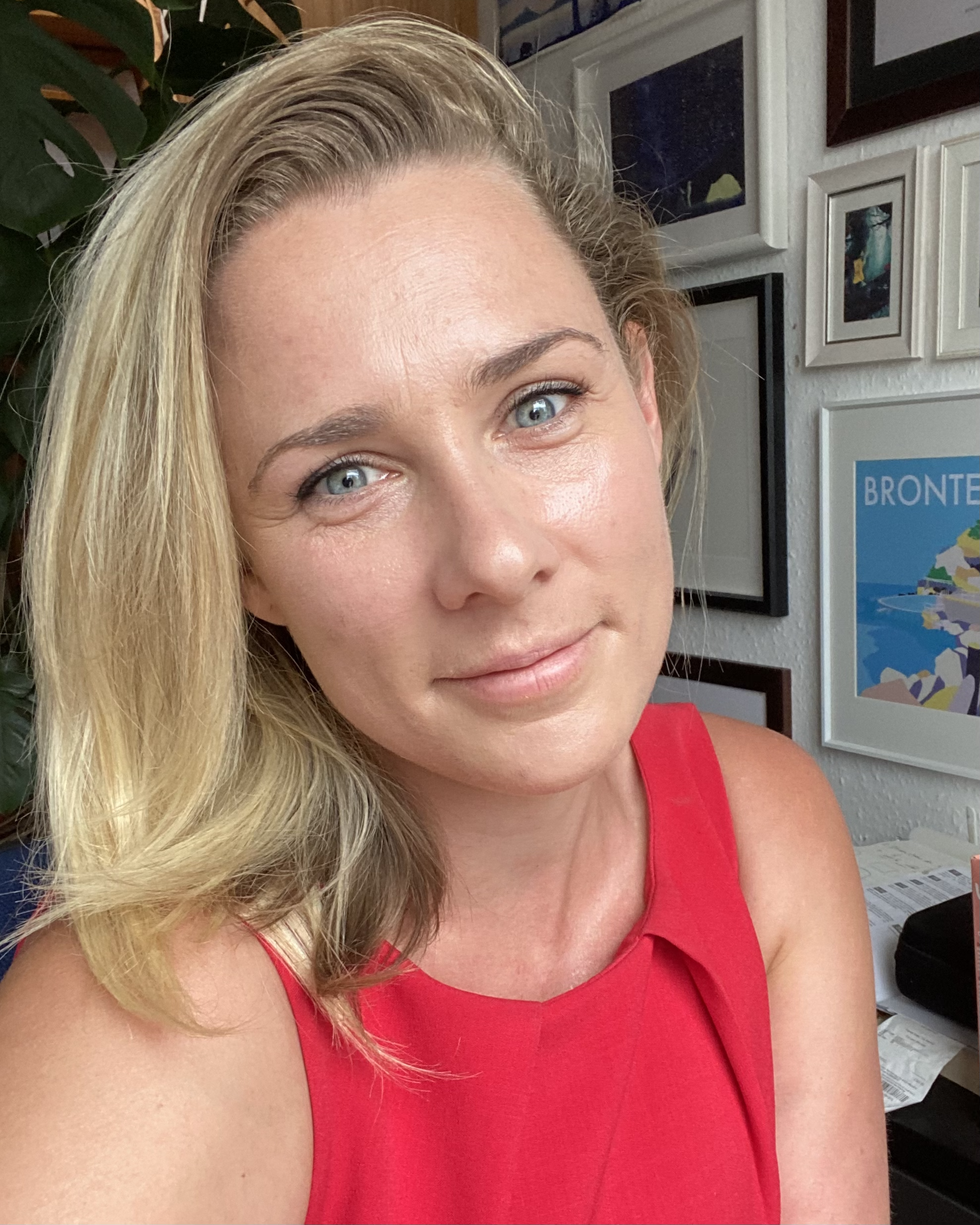
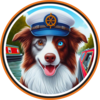


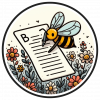
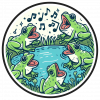










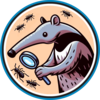







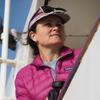
































































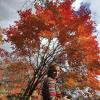




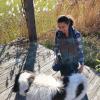













































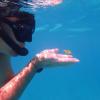



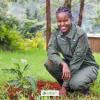

































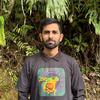





















Stephanie O'Donnell commented on "Leveraging Actuarial Skills for Conservation Impact"